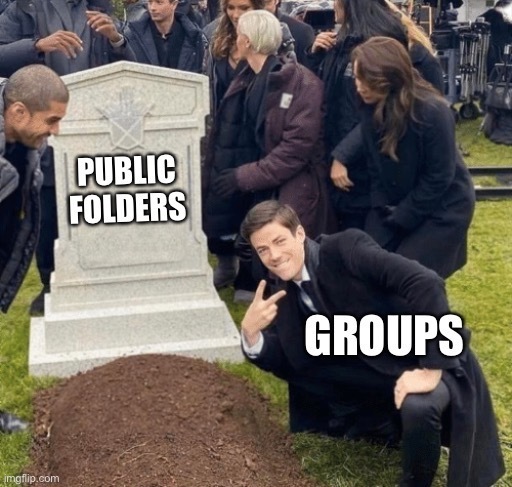Over the last several years Microsoft has been moving into Microsoft 365 with their services. With this migration they have introduced many new features into the eco system to make day to day communication and processes smoother. In this same transition Microsoft has also moved to depreciate legacy technologies for newer features that are purpose built for the ecosystem and modern data communication. We are in the process of what is now the second depreciation cycle of legacy technologies in Microsoft 365. The first being when on-prem services did not make it to the cloud and now with the deprecation of legacy APIs on January 31, 2023. Its important to note that depreciated does not mean these services are nasally going to be shut off but further support by Microsoft and third-party access to these services will also be limited if at all. In this case, services in Microsoft 365 that did not make the cut, by Microsoft, to be coded into the Microsoft Graph API with modern APIs will no longer be able to accessed by third-party applications as of January 31, 2023. Public folders did not make this cut.
What is the Graph API?
The Graph API was first introduced in 2015 as the “unified API”. This API was introduced to help solve the API sprawl that sprung up when different Microsoft product teams were trying to offer access to their portion of Microsoft 365 services. Not to say there was anything wrong with the connectors themselves but there was very little consistency, release cycles between the application integrations and connection processes. For Microsoft who was trying to convince everyone to adopt a platform that would unify the services, the developers trying to build on value this was maddening. Now 8 years later, a couple of rebranding/renaming (and a modern app authentication system to back it) we have the Graph API. This API is an abstraction layer between third-party access and the Microsoft application on the backend that offers a semblancy of consistency.
Public Folders insights
Public Folders were a great feature first introduced in 1996 to create a shared space between users working on the same project. Over time Public Folders absorbed more tasks and became in higher demand as did many of Microsoft’s other platforms such as SharePoint due to its collaborative nature. This worked well for many years but the game really changed when Exchange online was released and features could evolve and expand at a much more acerated rate. When new features were added in the Microsoft 365 suite Microsoft bridged some of the use cases between their product lines and created shared feature sets like Microsoft 365 groups to replace legacy features. One of the features these groups replace is Public Folders.
Microsoft 365 groups offer a shared collaboration front like Public Folders did while also giving a SharePoint backend to cleanly share and collaborate on files. Migration to Groups will offer many additional features like;
- Shared calendars
- Shared Microsoft Team and Channels to work on shared projects
- Access to mailbox from Exchange Online seamlessly
Along with what is currently offered, this is where Microsoft plans on putting development efforts moving forward meaning we should see more enhancements over time.
How to Migrate Public Folders to Microsoft 365 Groups
Microsoft provides methods for each supported version of Exchange on prem and Exchange Online on how to do batch migrations. Before you start the migration process you will want to take some factors in to consideration for preparation. First, the migration process only works for mail and calendar public folders. Next, the mailbox size for group mail is limited to 50 GB and there is not a way to increase this at this time. Good news that migrations are not an all are nothing scenario, it is possible to just migrate a single folder to the new group. When migrating you will also need to take into the consideration the permissions and settings will change in the migration to the new location since the permission hierarchy has been simplified in Groups to just Owners and Members. Each migration process depending on the version of Exchange you are coming from will be slightly different. You will want to check out the full list of considerations and download the proper PowerShell scripts for each of the processes from the official Microsoft documentation.
Migrate your public folders to Microsoft 365 Groups in Exchange Online: https://learn.microsoft.com/en-us/exchange/collaboration-exo/public-folders/migrate-your-public-folders-to-microsoft-365-groups
Comments, Concerns, SOL (Shed out of Luck)
Good news is Microsoft Groups have caught up with the technology and is a great replacement for Public Folders. Even after the cutoff date (January 31, 2023) Microsoft has not announced they will be shutting off any kind of access to legacy application features, yet. But if you have any kind of access for sending/receiving data or protection (like Veeam and every other backup company) will lose the ability to back up and manage public folders. More good news this is a great opportunity for providers help their customers and make sure they will not be caught without protection and offer professional services in migration.
If this is something you or your customer is deeply passionate, it is possible to submit a request with Microsoft about keeping public folders. https://feedbackportal.microsoft.com/feedback. It is recommended to state the exact reason why a company cannot move from Public Folders to Microsoft 365 groups, beyond just having many folders and it takes work or time. There must be a critical use case or feature missing that cannot be satisfied with Microsoft 365 groups. As of this point none of the requests have brought a high enough concern to put this feature on the roadmap.


